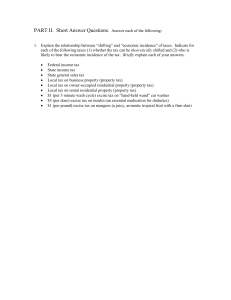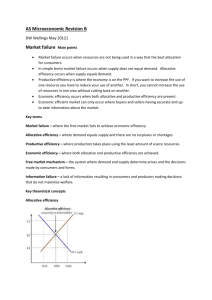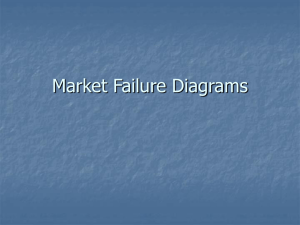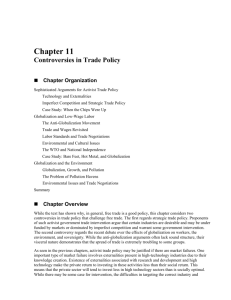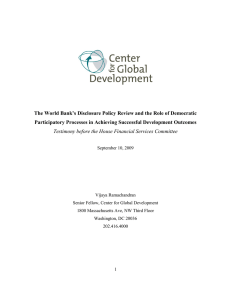Financial Access & Government Regulation
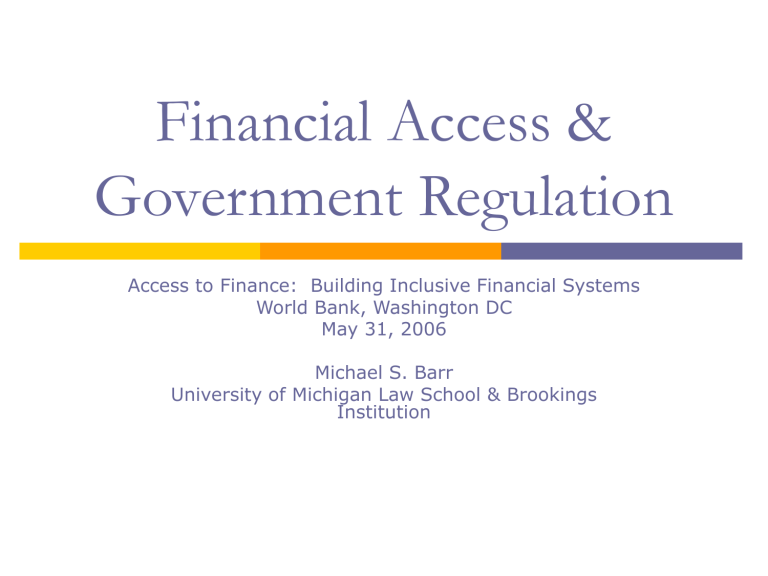
Financial Access &
Government Regulation
Access to Finance: Building Inclusive Financial Systems
World Bank, Washington DC
May 31, 2006
Michael S. Barr
University of Michigan Law School & Brookings
Institution
Defining the Problem?
Legal Infrastructure
Creditor rights & bankruptcy
Property rights
System of Justice
Financial Infrastructure
Prudential supervision & competition
Financial depth & lack of crony capitalism
Incomplete markets (scale, liquidity)
Information asymmetries & externalities
Collective action
Network externalities
Social externalities
Across which dimensions of access?
Credit
Equity
Savings
Payments
Insurance
Tradeoffs Among Regulatory Regimes
Legal & Financial Infrastructure
Prudential supervision, competition, etc.
Creditor rights, property, bankruptcy, etc.
Access-related laws
Negative Prohibition
Disclosure
Affirmative Obligation
Product Regulation
Subsidy
Default Rules
Negative Prohibition
Anti-discrimination laws
Animus
Statistic discrimination
Helps to reduce non-economic barriers to provision of financial services where rooted in stereotypes or bias.
Problems: difficult to get at hierarchical, socio-economic problems; focused on racial, ethnic, or gender discrimination.
Disclosure
Consumer
Negotiate to more efficient market
Problems
Behavioral economics literature
Complicated transactions & rules
Market
Enforce other laws
Communicate social norms
Rely on market, media, consumer groups
Problems: effectiveness depends on other laws, norms, and groups
Affirmative Obligation
Basic banking accounts
Measures of lending activity
Increases incentives, monitoring, and enforcement in improved access.
Problems: may stifle market innovation; may increase regulatory burden or bureaucratic power; may lead to directed lending/credit allocation; inefficiency
Product Regulation
Usury Laws
Anti “Predatory Lending” Laws
Enhance disclosure by limiting terms
Regulate “unreasonable” terms & practices
Problems:
may diminish access may harm product competition & innovation
Subsidy
Theory
Make marginal social benefit equal marginal private benefit
Types
Programmatic
Tax
E.g., U.S. Federal Housing Administration (risk-sharing)
CDFI Fund (grant-making)
Low-income housing tax credit, UK children’s accounts
Sponsorship
E.g., U.S. Fannie Mae; electronic payments systems
Problems: targeting, windfall, incentives (adverse selection/moral hazard), taxpayer liability, level playing field for competition
Default Rules, Framing & Institutions
Theory: Change behavior and/or attitudes through institutional, contextual cues.
Examples:
Automatic retirement contributions
Direct deposit with savings plan
Bank account when apply for government benefits or file for tax refunds
Tax credits for savings behavior (cue + incentive)
Problems: May be too weak, & for low-income, would likely need to be combined with public subsidy to be meaningful.
Conclusion
Tradeoffs Among Regulatory Regimes
Different policies for different problems in different countries at different stages of legal and financial development.
Areas for further research.



